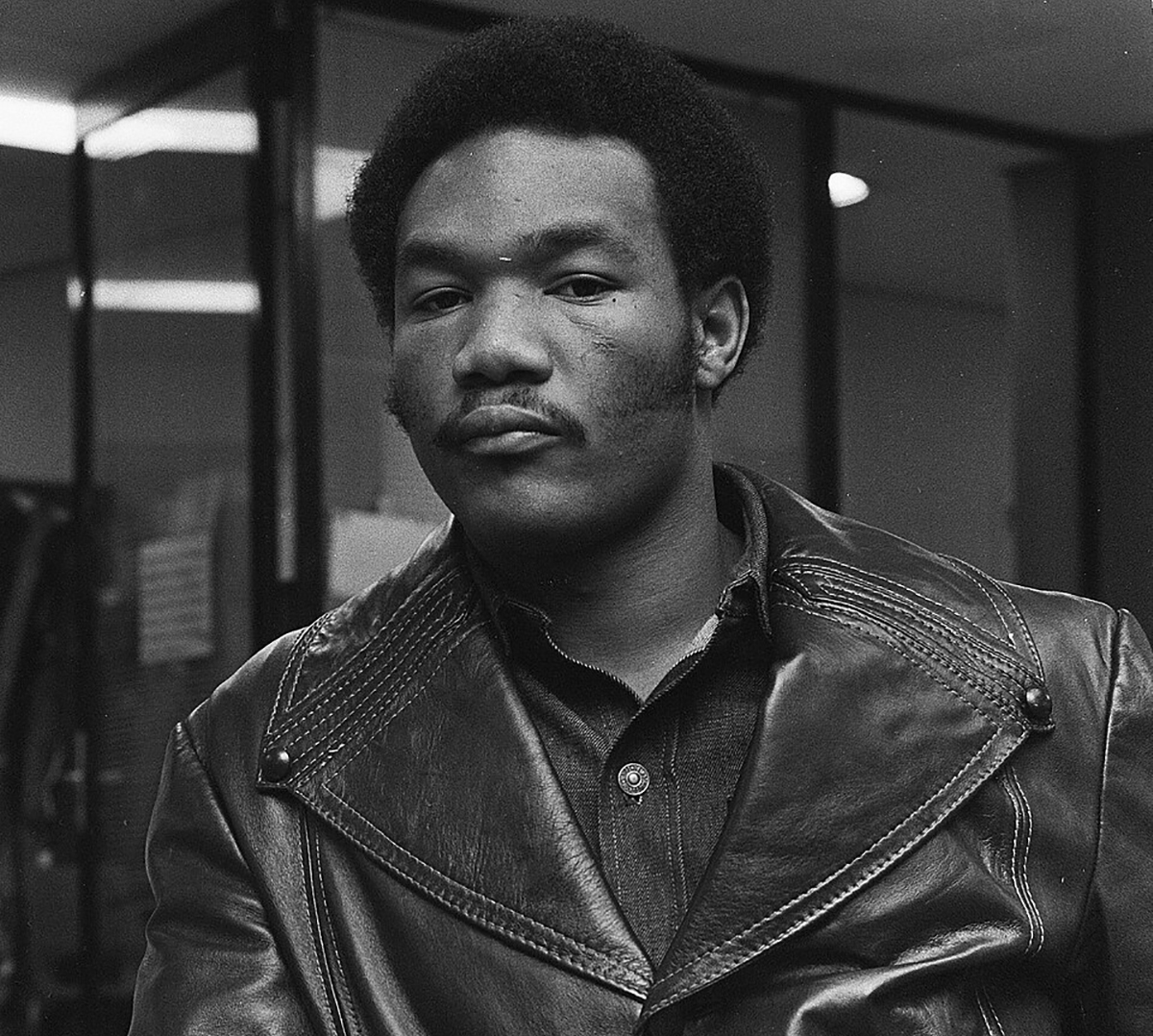How could George Foreman die? The world just doesn’t feel right without Foreman amongst the living. Entertainers come from all spectrums of art; actors, musicians, comedians, writers and sports to name a few. The odds of ‘making it are extremely low, with a very small percentage achieving a level of success that could be deemed significant, where a full-time living can be earned.
Just how small is that ‘very small percentage?’ Less than three percent. Parlaying that success into crossover stardom? I’d imagine those odds become astronomical, yet that is exactly what George Foreman did.
Foreman passed away on March 21 at the age of 76. At the present time, no official cause of his death has been given, but he had been noticeably absent from the public eye for the last couple of years.
George Foreman’s Early Success
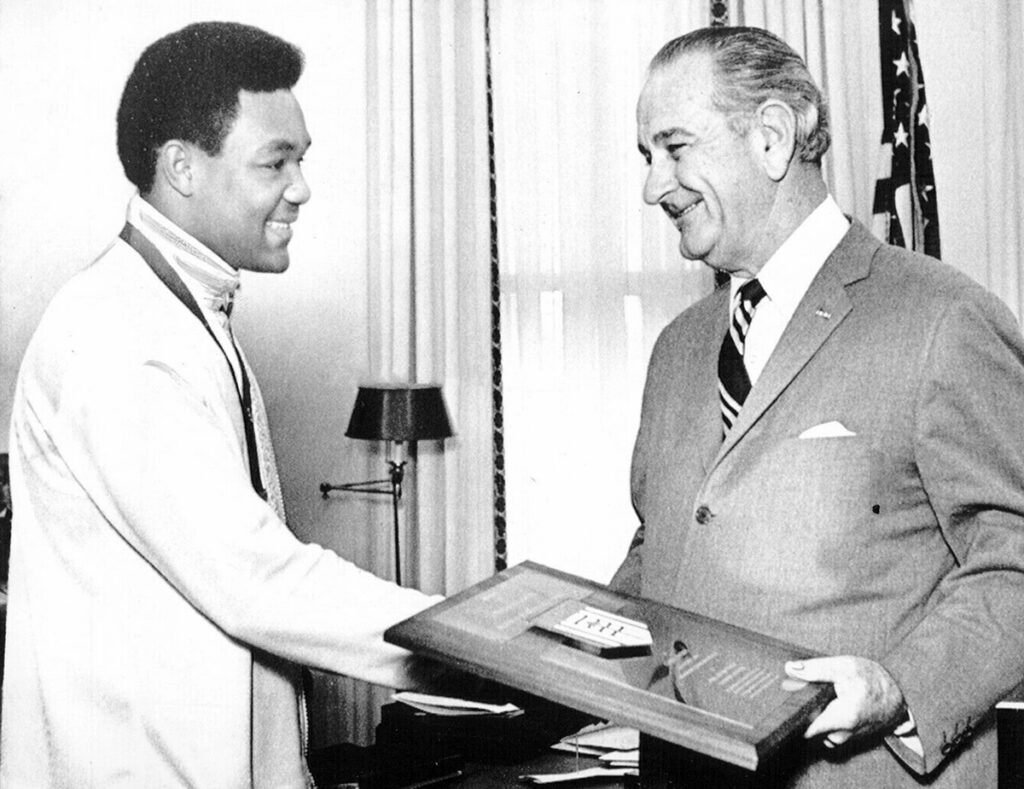
The late 1960s were quite a long time ago when the 19-year-old American won gold at heavyweight in the 68 Olympics in Mexico City. Back then, winning that prestigious prize was the quickest way of garnering attention not only in the boxing world but also in the sporting world. Eight months later, George Foreman turned professional in June 1969, winning 13 fights, 11 of which came by knockout in his first six months in the paid ranks.
The following year, “Big George” would graduate from prospect to contender, reeling off another 12 wins in 1970, with 11 coming via knockout, including wins over Gregorio Peralta and George Chuvalo.
1971 and 1972 would total 12 more wins, including seven wins all via stoppage, followed by another five wins all ending the same way. Those 12 fights would be of the stay busy variety as Foreman stayed active, closing in on a title shot, and it appeared his handlers were not looking to risk that shot with a dangerous fight.
All the same, at only 24 years old and with less than four years under his belt as a pro, Foreman was 37-0 with 34 knockouts and the number one contender in the world for a shot at undefeated champion Joe Frazier’s heavyweight title.
Foreman’s First Title Fight
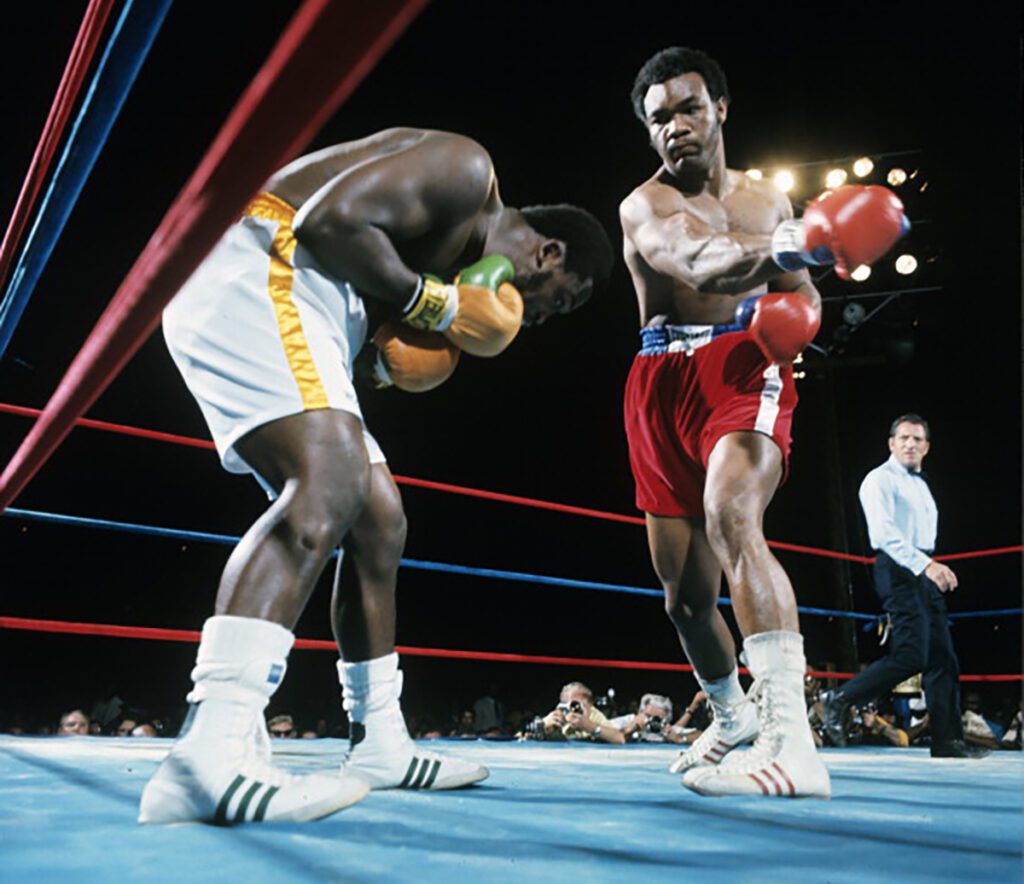
That title shot opportunity would come in Foreman’s first fight of 1973. If Foreman was going to win the heavyweight championship on January 22 in Kingston, Jamaica, he would have to do it the hard way.
Joe Frazier was not only the heavyweight champion of the world but the people’s champ. The beloved Philadelphia fighter had defeated Muhammad Ali in the “Fight of the Century” a little less than two years earlier in March 1971, and then successfully defended his crown twice since.
Frazier was battle-tested. An Olympic Gold medal winner himself four years prior to Foreman, Frazier owned wins over Bonavena twice, Chuvalo, Mathis, Ellis, Quarry, Foster, and Ali. At 29 years old with a record of 29-0 with 25 knockouts, Frazier was at the peak of his powers as well as the peak of his popularity.
Frazier had already fought on the biggest of stages in his 1971 fight against Ali at Madison Square Garden. Ali-Frazier 1 wasn’t just a sporting event, but a cultural one with political undertones, as Ali was a symbol of the anti-establishment movement after refusing military induction during the Vietnam War.
That refusal led to Ali being exiled from boxing from 1967 to 1970 and being stripped of his heavyweight championship. Ali denouncing the war resulted in significant public backlash. Frazier, in turn, became a symbol of the conservative, pro-war movement, stating that he would have no problem serving a country that had been very good to him should he be drafted.
While Ali was forced out of the sport, it would be Frazier who would go on to take over the heavyweight division, capturing the championship that Ali had never lost inside the ring.
Frazier defeated Ali over the course of 15 ruthless rounds in the finest performance of his career. This performance not only took place in front of a sold-out Madison Square Garden but was also broadcast to over 50 countries in 12 different languages and shown at closed-circuit locations all over the U.S. and Canada.
Frazier delivered under immense circumstances and was paid (along with Ali) a record $2.5 million for his efforts, the largest single payday for any entertainer or athlete at the time.
Foreman’s Stunning Upset Victory Over Frazier
When George Foreman stepped into the ring with Joe Frazier in Kingston, Jamaica, he was facing the most difficult assignment of his professional career. If that weren’t a big enough ask, he would be doing so on his biggest platform to date in front of 36,000 fans in attendance.
The Frazier vs. Foreman fight would also be shown on 225,000 closed-circuit locations in the U.S and Canada. Foreman had compiled 37 victories and number one contender status during Ali’s exile, while Frazier became the king of the mountain in the heavyweight division. But both men traveled different roads to get to their respective places, with Frazier’s trek being the more difficult.
These backgrounds steered oddsmakers to insert Frazier as a heavy favorite at 3 1/2-to-1. The practical thinking at the time was that Foreman had been fed a liquid diet of opponents in comparison to the glossy resume of well-known fighters Frazier had already proven himself worthy by defeating.
The experts could not have been more wrong. In less than two short rounds, Big George would batter and pummel an all but helpless Frazier, knocking him down six times before referee Arthur Mercante pulled the plug on the one-sided affair. At only 24 years of age, George Foreman would win the most coveted prize in all of sports.
Foreman’s First Pro Loss
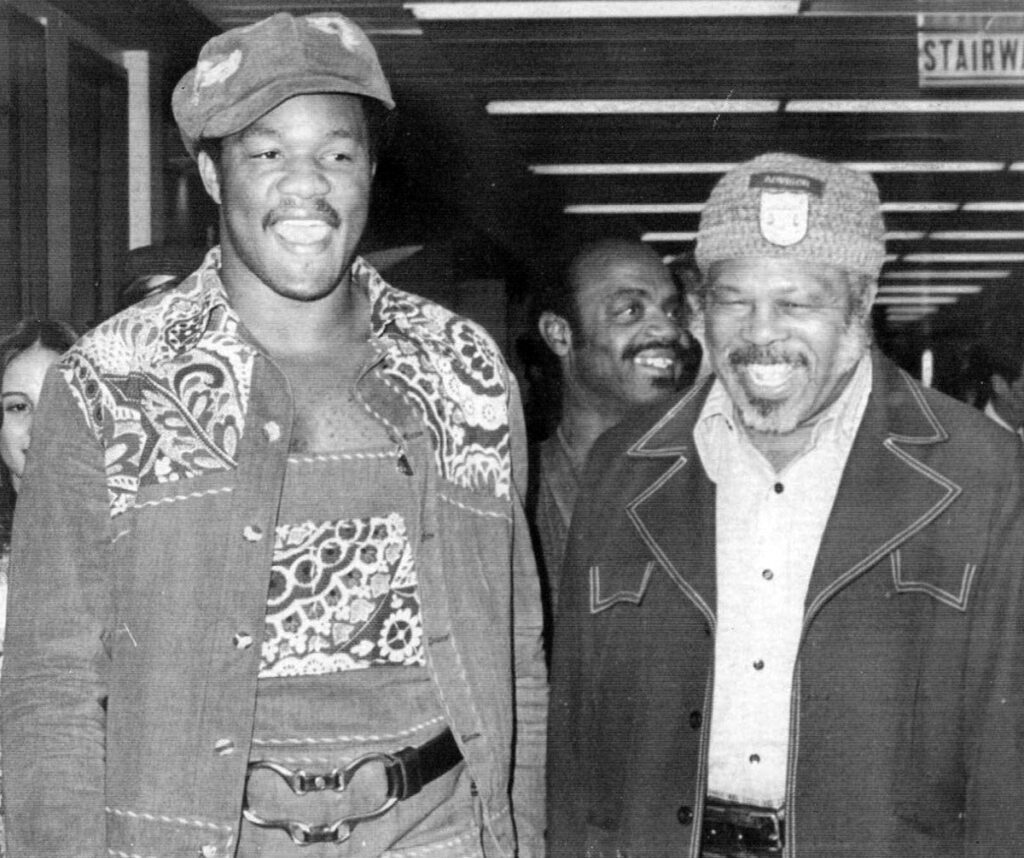
Foreman successfully defended his crown twice, with the second retention being a brutal two-round demolition job of widely respected Ken Norton. Those defenses would pave the way for the fight that could bring Foreman all the fame and fortune a man could dream of: a title defense against Muhammad Ali himself.
The bout took place in October 1974 in Kinshasa, Zaire. By now, we all know how that bout played out. As a 4-1 underdog, Ali constructed one of the most brilliant and famous game plans ever executed in a boxing ring using the ‘Rope-A-Dope’ to wear down and tire Foreman before delivering an eighth-round knockout.
Foreman had built a fierce reputation as a destroyer. Those brutal knockouts of Frazer and Norton cemented a public image of Foreman as that of almost a mythical creature, a Darth Vader in boxing gloves wiping out everyone in his path. A similar fate was predicted by the majority with Ali and when the script did not go as planned the course of George Foreman’s career and life would now dramatically change forever.
After his first professional defeat to Ali, Foreman would not return to the ring for nearly 15 months. During those 15 months of inactivity, Big George would try his hand at a little acting, filming appearances on popular TV shows like “The Six Million Dollar Man “and “Sanford and Son.” He would also have a part in the movie “Let’s Do It Again.”
The Return of Big George
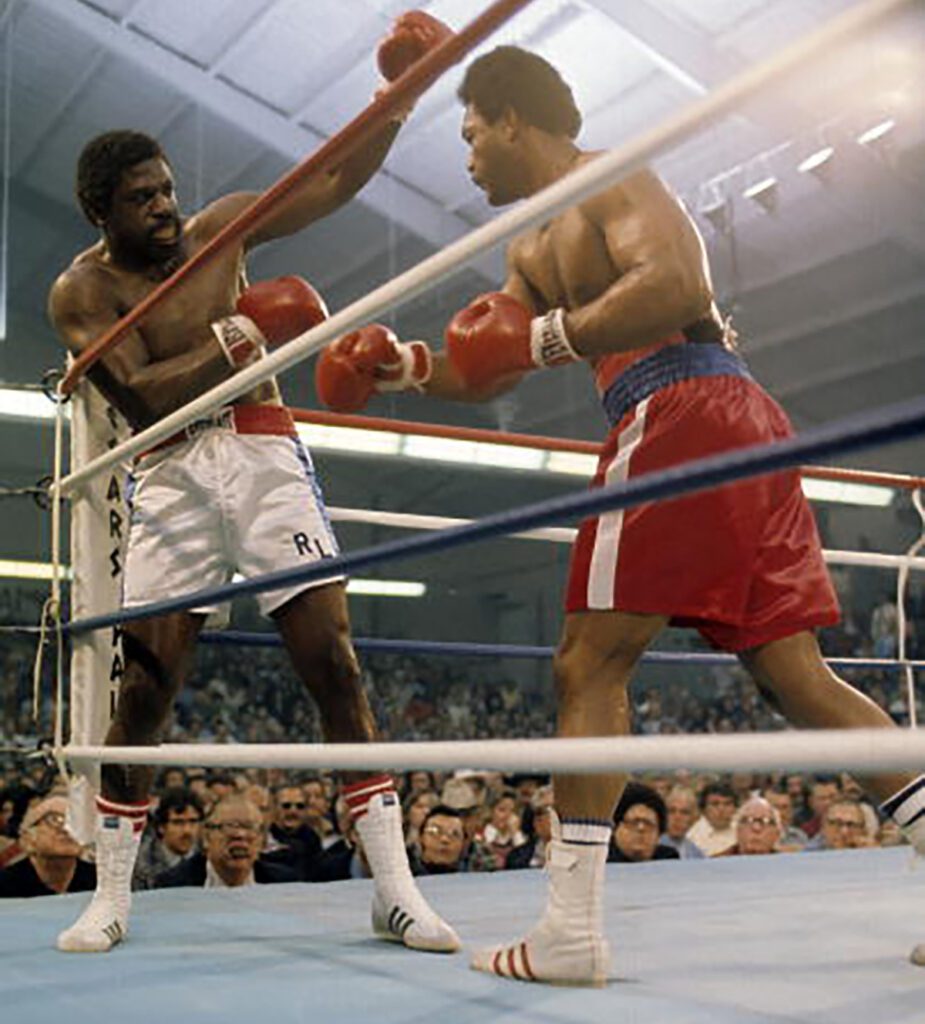
Foreman would finally return to the ring against top contender Ron Lyle in January 1976. He would earn a fraction of the $5 million payday from the Ali fight with a purse of $250,000 against a dangerous opponent.
Foreman’s return to the ring almost turned into disaster in round one when he was badly rocked with 20 seconds remaining in the round by a right overhand from Lyle. Foreman managed to clinch and wrestle his way out of the round.
Foreman returned the favor, gravely hurting Lyle in round two. The fourth round was named the sixth most exciting round in boxing history by Ring Magazine, as Lyle dropped Foreman early in the round. Foreman would get up and return the favor, depositing Lyle on the canvas before getting dropped again himself at the end of a time capsule round.
Foreman would again be hurt in round five before turning the tide and putting Lyle down for the count in what would be named the 1976 Fight of the Year in an instant classic.
George Foreman’s Religious Awakening
A rematch and methodical offering by Foreman before scoring a fifth-round knockout of Joe Frazier would then be followed up with three more knockout wins between August 1976 and January 1977. If the defeat to Ali changed the course of Foreman’s career and life, what would happen in his next fight and the minutes after its conclusion would change the course of boxing history forever.
On March 17, 1977, Big George would travel to San Juan, Puerto Rico, to take on Jimmy Young. In what can be described as a rough and tumble affair type showing from Foreman, he was predominantly outboxed over the course of 12 rounds.
From a stylistic perspective, a fight with Young might not have been the best matchmaking for Big George. Young was a defensive-minded boxer who was very skilled in the art of counterpunching. Young was also a very tactical boxer known to frustrate opponents, and he had the engine and punch resistance to drag Foreman into deep waters.
That’s exactly what he did in remaining an elusive target for the free swinging Foreman, who tired as the bout wore on. Foreman was fighting from a place of desperation, looking to land one big shot to turn the fight around, all the while resorting to rough-house tactics, rabbit punches, and low blows in attempts to slow Young down.
A 12th-round knockdown from the relatively light-punching heavyweight over an extremely fatigued Foreman sealed the fight on the scorecards. What would take place only a few minutes after leaving the ring would have a profound effect on Foreman and subsequently end his boxing career.
Foreman returned to the dressing room in low spirits, coupled with complete exhaustion likely brought on by the sweltering Puerto Rico humidity of engaging in 12 rounds of public pugilism. With his team around he would scream, “Jesus Christ is coming alive in me!”
With that, Foreman immediately jumped into the shower before anyone could wrap their head around what was happening. As the water poured down on him, Foreman shouted, “Hallelujah, I’m clean! Hallelujah, I’ve been born again!”
Could he be suffering from heat stroke, dehydration, or hallucinations? Perhaps a combination of all three? Only George Foreman knows for sure what he saw and felt, but he would promptly retire from the sport of boxing after having this religious experience and become an ordained minister. He was 28 years old.
From Olympic gold in 1968 to the heavyweight championship in 1973 to an abrupt retirement from the sport in 1977, George Foreman was in the public eye regularly for nearly a decade before becoming a born-again Christian. Once Big George found religion, he would all but disappear from public view.
For the next ten years of his life, the only way to see Foreman would be in person, courtesy of hearing him preach. This would begin with him preaching on street corners in the Houston area before he became a minister and opened The Church Of The Lord Jesus Christ in Houston.
Foreman was devoted to his family and his congregation, and he regularly bought radio time to spread God’s word.
Without the steady and often hefty income of boxing, Foreman began facing financial difficulties. By 1986, his vast fortune earned in the ring was all but gone. A series of bad investments, as well as funding a now long-standing youth center and a ministry, had eaten away at his savings, and he would declare bankruptcy.
With no other means of a lucrative income to keep his life’s work operational, Foreman would decide to return to the ring a decade after leaving his boxing career in the rearview mirror.
Coming Next in Part 2: George Foreman’s Unlikely Resurrection As Heavyweight Champion of the World
